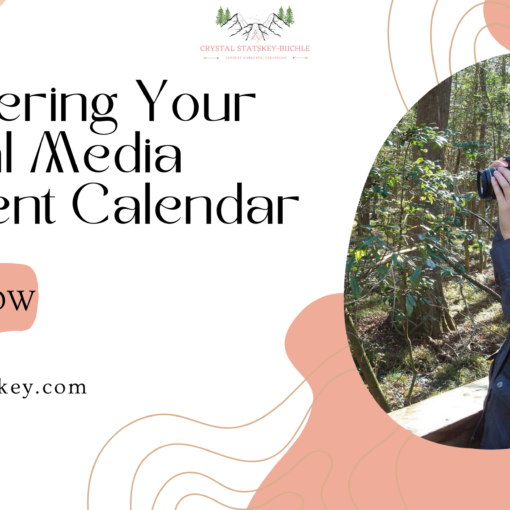You’re keeping an eye on your Instagram followers, the amount of shares you get on your most recent Facebook post, and the number of views on your latest reel or YouTube video. But, what other metrics should you be paying attention to in order to know how your social media platforms are performing?
I’m glad you asked! Tracking success online can be overwhelming, what with so many numbers and reports to keep an eye on. Just me alone pulls reports for social media, emails, websites, and link clicks for every client at the end of the month including myself.
But while tracking your followers, shares, and views is key to knowing what type of content is performing best (and what isn’t), it’s definitely not the only thing that matters when looking at how your social media is performing. Here are three things that are just as important, if not more important than those yo-yo follower numbers:
- Engagement
- Impressions
- Reach
Let’s talk about each metric and what they mean for your business.
Check your engagement level
First and foremost, engagement rates are there to help you determine whether you should be posting more value-based posts or more personal posts.
For example, if only a few people reacted and/or commented on your post about your brand story compared to that funny post you shared on your page, then you’d know that posting funny content will get you better engagement. And it will tell you to post more of that stuff in the future.
Of the three metrics that you should be paying attention to, this is the most important metric of all. Because really, the whole point of sharing posts online is to get your target audience to interact with your brand.
So if people are just seeing your posts but not reacting to or interacting with it, then it’s a sign that you should start switching things up.
Look at your post impressions
When checking out your social media reports, you probably notice that there’s a section where you can see how high your post impressions are. But what does this refer to? And how does it differ from your engagement rates?
Whereas engagement refers to how much action your audience has taken on any of your posts, impressions tell you the total number of times your posts have been shown on your audience’s feeds. Note that it doesn’t tell you if a post was clicked or not. It simply tells you how many feeds your post was possibly seen.
Did you like how I said, “possibly”? An “impression” means that a piece of content was delivered to someone’s feed. Whether they saw it or not is a different matter (see: reach). Impressions measure how many times a post was displayed, no matter if it was clicked or not.
For example: I loaded my Instagram feed, and your post loaded as the 5th post down, but I never made it that far because I decided to click on the little “story” buttons at the top and then I closed out for the day. The analytics will show that your post showed up on my feed, but I never saw it because I didn’t scroll down far enough. The only way you’ll know if I did, is by tracking post reach…
Track your post reach
Here’s where it can get a little tricky, as many business owners often confuse their post impressions with post reach. As mentioned above, your post impressions simply tell you the number of times your post was delivered to everyone else’s feeds, regardless if they actually saw your content or not.
Wth post reach, however, we’re talking about how many people (unique accounts) actually saw your content. But how does the platform know who actually saw your post? By tracking the post interactions. We’re talking about post clicks, along with other engagement metrics.
By tracking this metric, you can determine how many people you’re actually reaching with every post you make, and you can adjust your social media marketing strategy accordingly.
For example: Your post loaded on my Instagram as the 5th post on my newsfeed, after I watched stories for a little while, I decided to scroll through my newsfeed and your post just so happened to scroll by. Or maybe I hovered over it for a minute and then continued moving. You see where I’m going with this?
Engagement metrics means I clicked like, share, or comment on your post.
Impression metrics means your post loaded on my feed, whether or not I saw it remains a mystery.
Reach metrics means your post loaded on my feed and I saw it whether or not I was paying attention or clicked like, share, or comment.
What your metrics mean for your business
At the end of the day, your numbers will remain just that, unless of course you use these statistics to your advantage. How you tweak your social media strategy after seeing your social media reports will ultimately depend on your business goals.
For example, if you want to increase awareness through your posts and at the same time educate, then you should be looking for a combination of both impressions and engagement. A post that has a high impressions count but a low engagement number means your post wasn’t interesting enough for audiences to take action.
One more thing: If you post links on social media, for example on your Instagram bio, you can easily track the number of clicks you’re getting through bit.ly. This feature is also very useful when tracking clicks for your email marketing campaigns, landing pages, and more.
–
Need help with your business’ digital marketing strategy? I hear you! There’s no need to complicate things. Skip the overwhelm and hop on a 90-minute strategy call with me!




